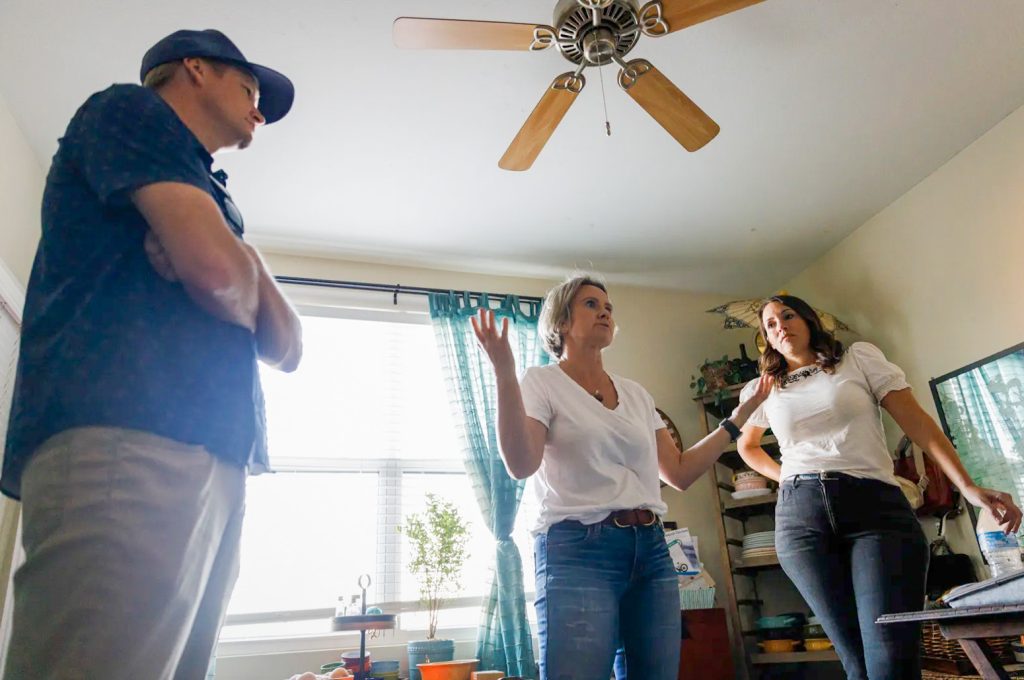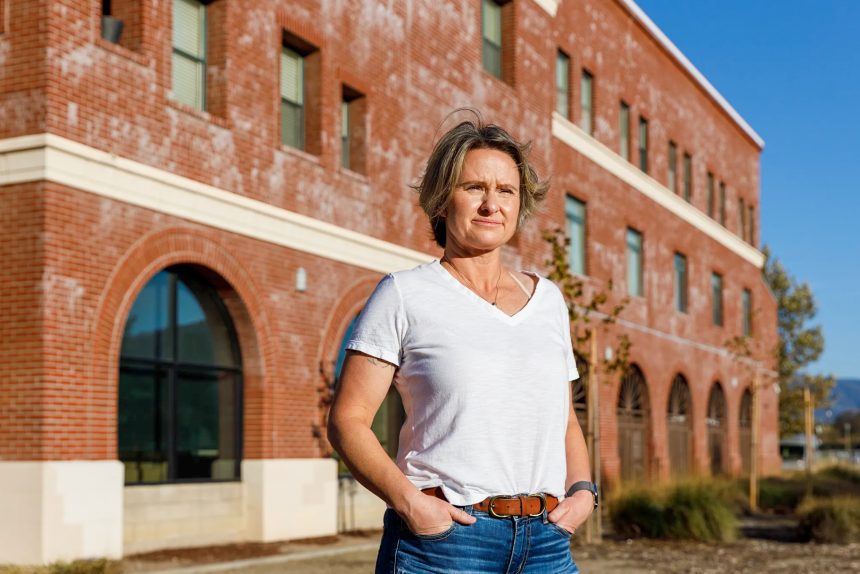Affordable Housing in the Inland Empire
BY DEBORAH BRENNAN, CalMatters
Every other week Laurel LaMont walks one block from her Temecula apartment to City Hall to make the case for a new model for low income housing.
She and her organization, Upward Community, have been calling on the city to create a community land trust, a nonprofit that buys land, then rents or sells homes to low- and moderate income residents.
But first, LaMont has a more pressing issue; she’s fighting her own eviction from an affordable apartment after her earnings rose above the building’s threshold for subsidized housing.
LaMont’s vision — and her own dilemma — show how the statewide housing crisis has made home ownership, and even rent, unaffordable to many working people.
“For all of time we’ve always had a lesser earning workforce that keeps your community going — your grocers, your baristas, janitors and cooks,” said LaMont, who works at Trader Joe’s. “These are permanent jobs, and we deserve to live in a community we serve.”
Housing prices in California are some of the highest in the country. More than half of tenants spend more than 30% of their incomeon rent, the Public Policy Institute of California reported.
California homes sold in September for a median price of $868,150, according to the California Association of Realtors.
Even in Riverside County, long regarded as a haven for reasonably priced housing, the median price was $625,000 last month. It would take an annual income of nearly $160,000 — or $77 an hour — with a 10% down payment to buy such a home in Temecula, according to Wells Fargo’s mortgage calculator.
The missing middle
For years LaMont has fought for better options for what she calls the “missing middle,” often referred to as workforce housing.
There’s no starter homes,” said LaMont, a single mom. “There’s no opening door for the lesser earning, or the single earner.”
Community land trusts offer that entryway to homeownership, she argues.
Under the model, a nonprofit purchases land and builds homes for lease or sale at stable monthly rates. In the for-sale version residents can buy a home, but not the land, which is restricted to low- or moderate-income housing for up to 99 years. If they leave, residents may take limited equity to their next home.
LaMont formed her organization, Upward Community, in 2020 with Melissa Bourbonnais, a political science professor, and Aaron Cook, a civil engineer. They’re trying to raise the money needed to form a 501C3 nonprofit, which would enable it to seek grants for a community land trust, LaMont said.
The organization is pressing the city to get on board. With a blonde pixie cut and quick smile, LaMont appears disarming but acknowledges she and her fellow activists can be “abrasive” in political exchanges.
“We go to every single council meeting and we do not go in gently,” she said. “Every Tuesday we just walk on up there and give them an earful.”
She has made headway with some council members. Mayor Pro Tem Brenden Kalfus said he thinks a community land trust could be useful in Temecula.
“I don’t think it’s the solution to the housing crisis, but it helps go in the right direction,” he said. “I think the community land trust gives the community local control.”
Various city-owned parcels could be used for that purpose, Kalfus said. He leans toward townhomes or small single-family homes with limited equity over condos or apartments.
“I think that would best serve the workforce in Temecula,” Kalfus said. “When you go to sell the home, you can’t make more than a certain amount, so it keeps the price reasonable.”

Temecula’s big homes
City officials are working with legal counsel and a consultant to analyze the community land trust model, said Matt Peters, director of community development, in an email to CalMatters. The city also would need a nonprofit organization to administer the trust, a partnership with a real estate developer and financial resources to accomplish it, he added.
Councilmember Zak Schwank said “all options are on the table” for expanding housing in Temecula. But he said the city already works with Habitat for Humanity, and he thinks that’s an efficient way to build low-income homes. Habitat homeowners help build their own homes alongside volunteers and pay an affordable mortgage.
Schwank worries that a community land trust would require city administration, creating new bureaucracy.
“We would have to have a whole other structure in place, with oversight and partners, so I wonder if it’s just cleaner to continue to invest in Habitat homes and things like that,” he said.
Temecula is known for its large, suburban homes, but Schwank said city officials have tried to persuade developers to downsize housing tracts and build entry-level homes.
“We have tried to be more creative with developers, to incentivize them to build the missing middle, or those smaller lot homes,” he said. “We haven’t been too successful with that.”
To spur home construction, the city has rezoned some areas, Schwank said. For instance, it retooled its specific plan for an area called Uptown Temecula to accommodate 3,700 more housing units and streamlined the approval process to make it easy to build new homes there.
A city zoning map over her bed
Meanwhile LaMont’s own housing situation has taken on new urgency. In July she received an eviction notice after her take-home pay rose to $52,000, exceeding the annual affordable program limit of $49,000 for a two-person household. She got extensions through October, but now she has to move. She said she faces a rent increase from the current $935 she pays per month to more than twice that rate.
LaMont’s apartment in the Warehouse at Creekside is small but tightly organized. Her 19-year-old son Christopher uses a bunk bed in the single bedroom, while LaMont sleeps in the living room on a bed raised for storage underneath. There’s no pantry, so a bookshelf stores packages of Trader Joe’s baking mix, olives and chicken broth.
A zoning map of Temecula hangs over LaMont’s bed, and shelves next to it are stacked with books on urban planning.
“My unhealthy habit is reading government documents and learning about housing,” she said.
Christopher said his family’s tenuous situation seemed normal when he was a child, but he later realized housing was a struggle. For his high school senior project he presented a design for a walkable, pedestrian-friendly community in Temecula. Now he’s attending Mount San Jacinto Community College with the goal of becoming a civil engineer.
“I’m just starting to understand there’s no salvation for me if I don’t make it on my own,” he said.
A broken system
City officials say they’re aware of LaMont’s situation and are exploring ways to adjust the income criteria for her building. The U.S. Department of Housing and Urban Development defines low-income renters as people earning less than 80% of an area’s median income. In the Inland Empire that’s $65,600 a year for a two-person household, well above LaMont’s earnings.
But the income criteria can vary by project. The Warehouse at Creekside restricts tenants to 60% of the area median for one-bedrooms, putting LaMont just above the threshold. City officials said they’re working with the developer to renegotiate that limit.
It won’t change in time to save LaMont’s lease. She has found a two-bedroom apartment that will open in a few months. It will allow her and her son their own space, but it will double her rent. She worked out a deal to stay in a different apartment in her current building in the interim.
Even with a potential solution, she laments that affordable housing formulas create a trap that penalizes tenants for improving their financial station. She said that’s what causes the “brokenness” of the affordable housing system.
“You’re constantly chasing; there’s no hope of saving any money,” she said.
For More Housing News Visit www.zapinin.com/housing.


